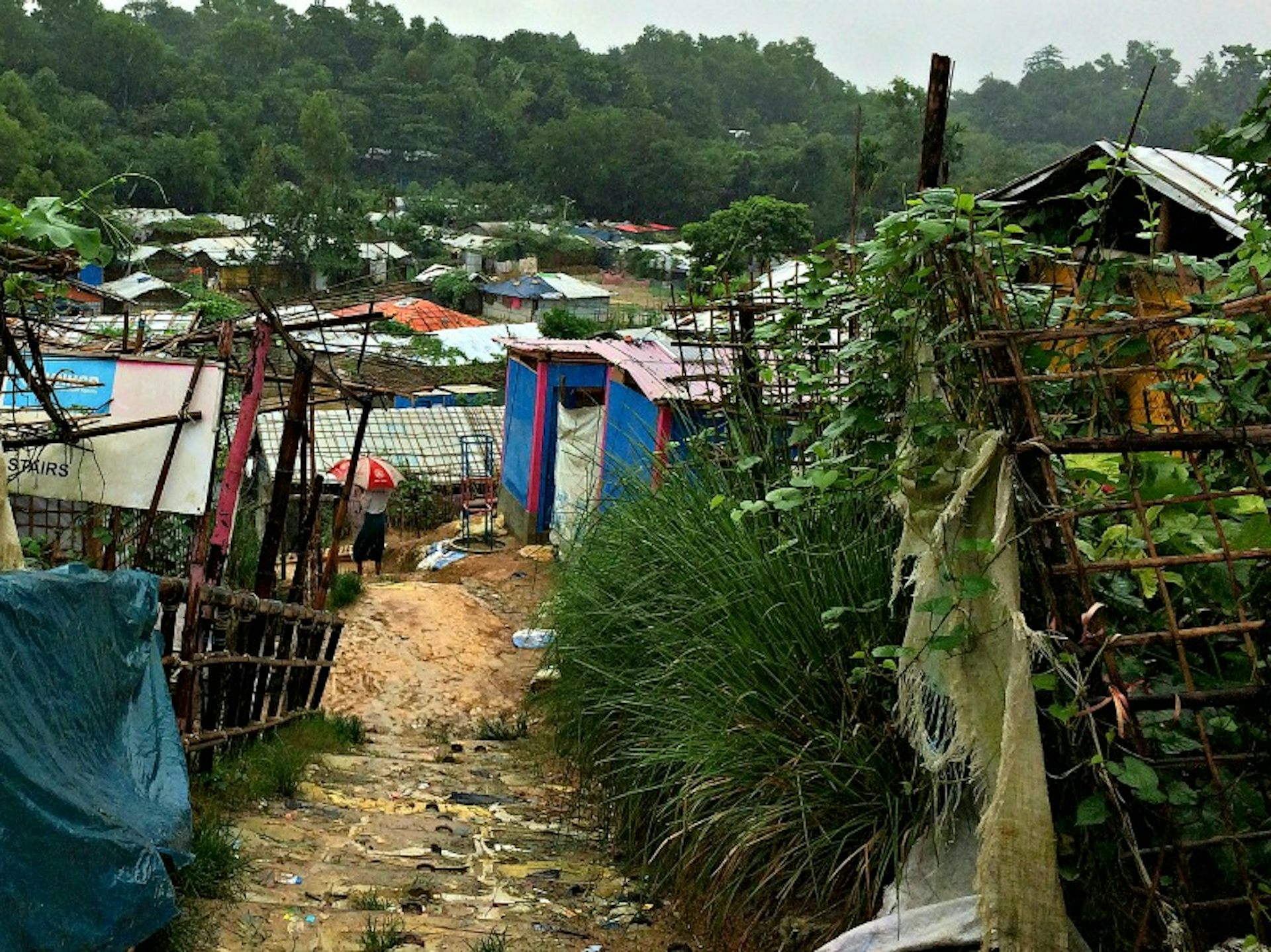Author:
Rubayat Jesmin
(MENAFN- The Conversation) The boy's eyes lit up when he talked about his dream of becoming a doctor.
Seven-year-old 'Mohammad' – not his real name – is a Rohingya Muslim from Myanmar. I met him at a learning center at a refugee camp in Cox's Bazar, Bangladesh, in early July 2019.
After sharing his aspirations, Mohammed quickly remembered reality.
'I know my dreams will never come true,' he said with a faint smile.
Refugee crisis of global proportions
Mohammed is among the more than700,000 Rohingyawho have taken refuge in Bangladesh after anethnic cleansingcampaign ofrape, killing and tortureby the Myanmar military in mid-2017. They joined themore than 200,000 Rohingyaswho had previously fled Myanmar's brutal efforts to ridthe Buddhist-majority country of this marginalized Muslim minority .
Of thenewly arrived Rohingya , three-quarters are women and children,according to the United Nations .
In a noteworthy humanitarian gesture, the Bangladeshi government has given refuge to these people. Aided by Bangladeshi community organizations, various UN agencies andother international donors , the Rohingya have been receivingshelter, food, clothes and basic health caresince the massive exodus in 2017.
This essential care, which cost an estimatedUS$920.5 million in 2019represents a gargantuan global effort. Still, the resources arewoefully inadequate .
Most Bangladeshi refugee camps are overcrowded and, as a result,unhygienic . Residents survive on the absolute bare minimum of nutrition and other necessities.Monsoon rain , cold and landslides are everyday threats for these Rohingya, as I've witnessed firsthand during my visits to Bangladeshi camps in 2017 and 2019.
It is a dismal existence for all. But it is the plight of the roughly 500,000 Rohingya children living in limbo strikesmeas bleakest.
Concerns of a lost generation
Research shows that future ofrefugee children grows more imperiled the longer they remain out of school .
In many countries that host substantial refugee populations, including Turkey, Lebanon and Uganda,the United Nation's refugee agencyandthe United Nations Children's Fundensure children receive a quality, full-time education, either at the camps or in nearby public schools.
Even so, just 23% refugee children worldwide are enrolled in secondary school,according to the UN's High Commission on Human Rights . Just 1% attend university.
Because Bangladeshi authorities have notgranted the Rohingya official refugee statusand consider them instead 'forcibly displaced Myanmar nationals,' the roughly 500,000 Rohingya children in the country haveno access to a formal education . Rohingya children are not permitted to attend Bangladeshi public schools.
The United Nations Children's Fund and its partners offer Rohingyas aged 4 to 14 two-hour daily lessons on Burmese, English, math and life skills at about1,600 learning centers located at the camps . These classes keep about145,000 Rohingya children– or about 30% of the Rohingya youngsters in Bangladesh – occupied for part of the day but do not provide the kind of formal education that will allow the children to work toward a high school degree and enter the job market.
The camps offer no schooling at all for Rohingya refugee adolescents aged 15 to 18.

English-language exercise books at a UNICEF-supported 'learning center' at one of the Kutupalong refugee camps in Bangladesh.
Rubayat Jesmin, Author provided
Some teenagers, mostly boys, haveturned to madrassas , or Islamic learning centers, where they can receive a religious education.
The remaining Rohingya children who attend neither UNICEF classes nor madrassas are simply left to fill their own day. At the Rohingya camps, I saw boys working in shops, playing cards or sitting idle at all hours of the day.
When I asked Mohammad what he does when he is not in school, he told me that he 'takes care of his family.'
'I play with the other kids, too,' he added with a grin.
Adolescent girls, I learned, are often kept at home by their parents because of the Rohingya's conservative social and religious norms.
The camps can also be dangerous for girls. Human traffickers have been known totarget young Rohingya women , promising them jobs outside the camps. Girls face other forms of violence and human rights abuse at Bangladesh's camps, too, includingchild marriage .

Bangladeshi camps for the Rogingyas are typically overcrowded, unhygienic, muddy and prone to landslides.
Rubayat Jesmin, Author provided
Rohingya repatriation
Growing up in unstable conditions, withno possibility of study , Rohingya children like Mohammed are at risk of becoming alost generation .
Their limbo may not last forever. In response to heightened international pressure,Myanmar in November 2017 agreedto take the Rohingyas backstarting November 2018 .
However, their return waspostponeddue to protests by the refugees, who fearedconditions in Myanmar was not yet safe . The United Nations and other international refugee services have also voiced concern about sending the Rohingya back, saying there wasno indicationthat the Myanmar government had punished the people responsible for the crimes in Rahkine state, nor agreed to give the Rohingya citizenship.
Considered foreigners in both Myanmar, their native country, and Bangladesh, where they've sought refuge, the Rohingya Muslims are the world'slargest stateless people .
While the negotiations for their repatriationcontinue , a generation oftraumatized Rohingya children wait for their futures to begin .
[ Deep knowledge, daily.Sign up for The Conversation's newsletter . ]
Children
Education
Refugees
Myanmar
UNICEF
Bangladesh
Rohingya
Rohingya Muslims
Refugee camps
Religion and society
MENAFN2407201901990000ID1098797349
Legal Disclaimer:
MENAFN provides the information “as is” without warranty of any kind. We do not accept any responsibility or liability for the accuracy, content, images, videos, licenses, completeness, legality, or reliability of the information contained in this article. If you have any complaints or copyright issues related to this article, kindly contact the provider above.